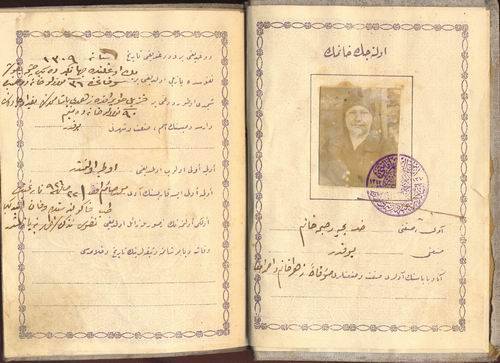
NO MARRIAGE WITHOUT PERMISSION!
There are those who say things like, “In the past, everything was under the control of men. They would say ‘be gone’ and throw women out on the streets.” But is this really the truth? Is it possible to believe that marriages and divorces were not recorded in a vast empire?
The marriage contract is established by mutual acceptance and offer in the presence of two witnesses. However, since marriage is also considered a form of worship, a third party has always performed marriages since the time of the Prophet. The marriage contract has been conducted as a sacred ceremony.
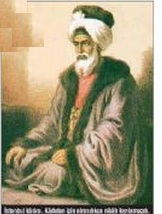
A Wedding Without Qambar
The Prophet Muhammad (peace be upon him) used to conduct the marriages of his companions (sahaba) with a sermon, which consisted of praising Allah, sending blessings on the Prophet, and making supplications. After the marriage, he would pray for the couple. However, reciting a sermon and supplications is not a requirement for marriage.
The four caliphs continued this tradition. Caliph Ali, due to his busy schedule, assigned his freed slave and personal secretary Qambar to conduct marriages. In fact, the saying “a wedding without Qambar” comes from this practice.
Since the time of the four caliphs, births, deaths, and marriages have been recorded in Islamic states. These records were used as the basis for treasury expenses. From the Seljuks onward, either judges (qadis) conducted marriages, or permission was obtained from judges for marriages.
During the Mamluk period in Egypt, there were officials called aqqads who conducted marriages under the supervision of judges. Over time, the custom of conducting marriages in the presence of a judge or an official spread among the people.
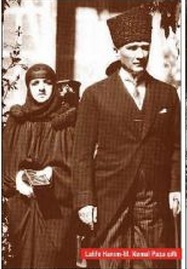
Imam Marriage?
Throughout Islamic history, Muslims, due to the importance of marriage, preferred it to be conducted by someone knowledgeable in religious and legal rulings and respected in society. Therefore, marriages were generally conducted by imams. The term "imam marriage" in Türkiye stems from this tradition. However, it is not necessary for an imam to conduct the marriage. In fact, there is no need for anyone to conduct the marriage. If a man and a woman say “I accepted” in the presence of two witnesses, the marriage is established.
There is a tradition that still continues among the people. A document containing the names and signatures of the parties to the marriage, their representatives, and witnesses, along with the amount of bridewealth (mahr) paid and to be paid to the bride, as well as any items given to the bride from her father’s house, would be handed over to the bride’s side. In case of any dispute in the future, this document, called the bridewealth paper, would serve as evidence. The bride could reclaim her bridewealth and dowry.
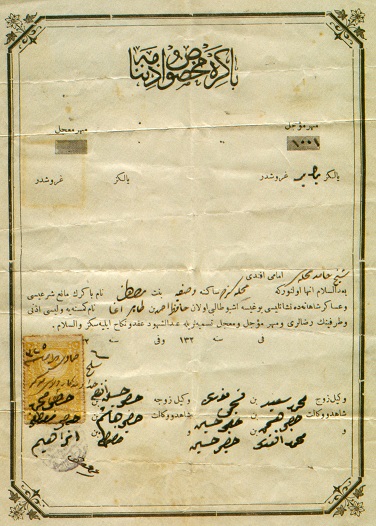
25 Akche Needed
In the Ottoman Empire, either judges themselves conducted marriages, or permission was obtained from judges to conduct marriages. A fee of 25 akche (silver coin) was paid for this permission, 20 of which went to the judge, and the rest to court clerks. Those getting married also paid a bridal fee to the timariots. This tax varied depending on whether the woman was a virgin or a widow, rich or poor, Muslim or non-Muslim, and it was not the same in every province.
It was not enough to obtain permission from the judge for marriage. Sheikh al-Islam Ebussuud Efendi issued a fatwa requiring the guardian's permission in marriages, based on Imam Muhammad's opinion, due to the corruption of the times and the increase in kidnappings. “If Zayd marries the adult Hind without the permission of her father Amr, and if Amr does not consent, can the marriage be annulled? The answer: Yes, it can.”
This fatwa was turned into law by Sultan Suleiman I. Thus, from 1544 onward, judges were forbidden to accept marriages without the guardian's permission. As stated in the Mecelle (the civil code of the Ottoman Empire), “In matters of disagreement among jurists, if the leader of the Muslims orders a certain opinion to be followed, it is obligatory to follow it.”
Since marriage has many legal consequences such as lineage, alimony, bridewealth, waiting period (iddat), and inheritance, it was required to be conducted and registered by official authorities. This was done to ensure publicness and prevent ill intentions. Indeed, the ruler can impose certain orders and prohibitions for the public benefit.
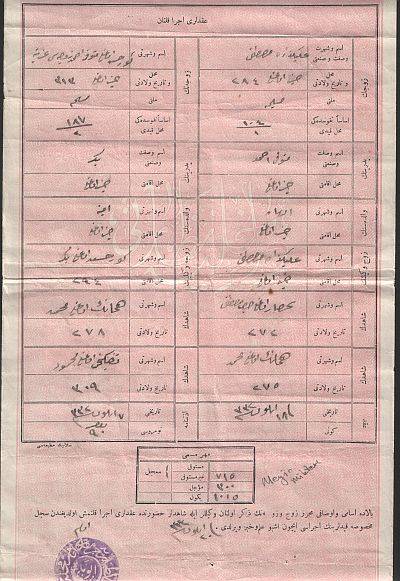
I Also Conducted the Marriage Contract
Non-Muslims’ marriages were conducted by a patriarch or rabbi after obtaining permission from a judge. However, sometimes they had their marriages conducted by judges or imams instead of the patriarch or rabbi because it was cheaper. Religious leaders would occasionally object to this before the government. Ottoman judges were instructed not to interfere in non-Muslims’ marriages unless requested.
The judge from whom permission was obtained was the judge of the residence of one of the parties. The judge would issue a permission document. In this document, after stating the names of the parties to the imam or religious leader, it would say, “If there is no legal impediment, and with the guardian's permission and the consent of both parties, conduct the marriage contract in the presence of witnesses.”
All kinds of documents issued by judges were recorded. In the past, obtaining a marriage record was called issuing a permission document among the people.
The permission document was given to the imam. It was not customary for the parties to be present at the marriage ceremony. Both parties were represented by their guardians or representatives. On the wedding day, the imam, in the presence of two witnesses, would first ask the bride’s side, “Do you accept so-and-so’s son so-and-so with this amount of bridewealth as your husband?” After receiving the answer “I accepted,” he would ask the groom’s side, “Do you accept so-and-so’s daughter so-and-so with this amount of bridewealth as your wife?” After receiving the answer “I accepted,” he would repeat these questions to both sides twice, then say “I also conducted the marriage contract” and make the supplication mentioned in the Sunnah. Thus, the marriage would be established.
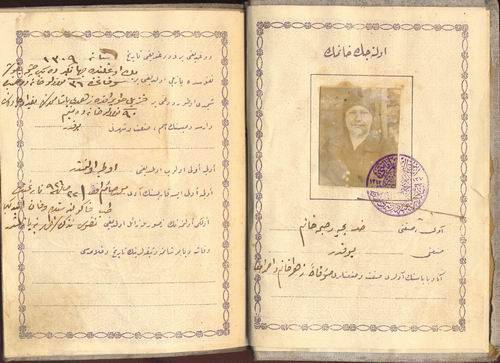
Be a Witness Yourself!
A marriage conducted without the judge's permission is valid. However, in the event of a dispute concerning such a marriage, judges could not handle it. Acting against the imperial order is a crime and is punishable.
A man went to the court with his fiancée to get married. However, he only had half the amount needed for the marriage fee. When he learned that this money would not be enough, he asked for a discount. When the judge did not agree, he turned to his fiancée and said, “I take you as my wife. Do you take me as your husband?” Upon receiving the answer “I do,” he then turned to the judge and clerk and said, “You be witnesses too, gentlemen!” and left.
Similarly, in Aksaray, Istanbul, a man secluded a woman in a house. The neighborhood, in the name of protecting their honor, went to raid the house. When both came to the window unprepared, there was nothing left to hide. Realizing the situation was serious, the man asked the woman, “I take you as my wife. Do you take me as your husband?” Upon receiving the answer “I do,” he turned to the crowd and said, “You be witnesses too, folks!” With nothing else to do, the crowd dispersed.
Marriage Certificate
After the Tanzimat period, imams or religious leaders who conducted marriages were required to prepare a Marriage Certificate and report it to the civil registry office within a few days. These certificates, filled out by the officiating imam, were of three types: for virgins, widows, and marriage renewals. Fees of 5, 3, and 1 piastres were collected for each type, respectively. Half of these fees went to the imam or religious leader, and the other half to the civil registry office.
The amount of the bridewealth was also recorded in the certificate. The officiating imam would have the certificate signed by the parties or their guardians or representatives and the witnesses, then endorse it and send it to the local civil registry office within eight days. The civil registrar would record the information in the population register and the relevant documents in the individuals' population certificates, then return the documents to the parties through the imam. This process officially registered the marriage.
Permission documents were issued with the condition “if there is no fiancée in the military.” Imams were prohibited from marrying girls whose fiancés were in the military. However, engagement does not have legal consequences. This provision was introduced to protect the rights of those who went to war. If the fiancée in the military broke off the engagement, it would not prevent the marriage.
Penalties for Non-Reporting
After 1914, the responsibility of reporting the marriage to the civil registry office was assigned to the husband. Those who did not report the marriage certificate obtained from the imam or religious leader to the civil registry office were subject to fines and imprisonment. There had already been penalties for conducting marriages without permission. This penalty was previously 2 quarter medjidie coins. In those times, a medjidie was a 24-gram coin containing 20 grams of pure silver, equivalent to one-fifth of a 7.2-gram Ottoman gold coin.
In 1913, the penalty for conducting marriages without permission was increased to imprisonment from three months to two years. As can be seen, it is not true that marriages and divorces were not recorded in the Ottoman Empire. The state followed this matter very strictly.
Article 110 of the Civil Code, adopted from Switzerland on February 17, 1926, and numbered 743, abolished the practice of judges allowing imams, priests, and rabbis to conduct marriages. Imprisonment and fines were imposed on couples and imams who attempted religious marriages before municipal registration. Some famous figures in the magazine world would carelessly say, “We had an imam marriage with my lover,” and dutiful prosecutors would immediately call them for questioning. Warned by their clever lawyers, they would escape by saying, “We were misunderstood; we have a serious relationship.” Living without marriage was considered a serious relationship, while living with a religious marriage was considered a severe crime.
The penal code article that criminalized living together with a religious marriage was found contrary to human rights, freedom of religion, and conscience by the Constitutional Court on May 27, 2015, and was annulled. However, the revolutionary law that requires marriage to be registered only with the municipality is still protected by the constitution.
Önceki Yazılar
-
TRACES OF ISLAM IN CONSTANTINOPOLIS7.01.2026
-
WHO CAN FORGIVE THE KILLER?31.12.2025
-
WHEN WAS PROPHET ISA (JESUS) BORN?24.12.2025
-
IF SULTAN MEHMED II HE HAD CONQUERED ROME…17.12.2025
-
VIENNA NEVER FORGOT THE TURKS10.12.2025
-
THE FIRST UNIVERSITY IN THE WORLD WAS FOUNDED BY MUSLIMS3.12.2025
-
WHO BETRAYED PROPHET ISA (JESUS)?26.11.2025
-
IT HAS BEEN MORE THAN 100 YEARS SINCE ITS ABOLITION, BUT... IS THE CALIPHATE BEING REESTABLISHED?19.11.2025
-
GREETINGS TO YOU, O OTTOMAN SANJAK!…12.11.2025
-
ROTHSCHILDS BROUGHT THE END OF THE OTTOMAN EMPIRE!5.11.2025